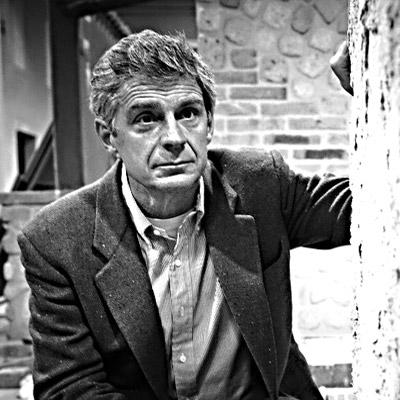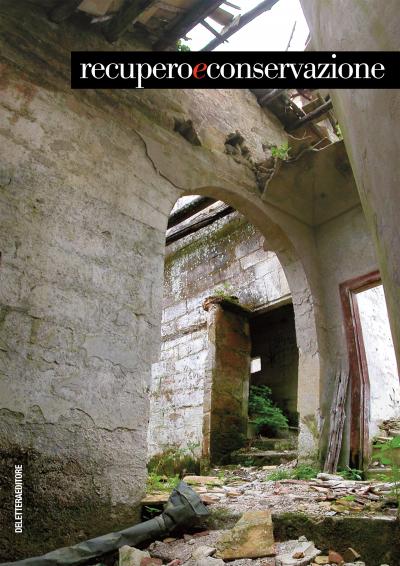PAESAGGIO? NATURA?
Recentemente mi interrogavo su come concludere un mio intervento ad un prossimo convegno sulla conservazione-valorizzazione del paesaggio; cercavo un pensiero di qualche studioso, di qualche specialista del settore che riassumesse, in modo critico, la situazione attuale. Spesso si ha la fortuna di trovare qualche citazione chiara e sintetica che riassume e illumina i concetti che tratti; cercavo qualche riflessione, magari proveniente da altri campi della cultura e del sapere, che potesse essere traslata nel settore che ci appartiene ma questa volta nessuna mi soddisfaceva.
Nemmeno le raffinate e colte riflessioni che traevo da Cederna, da Settis, da Turri e dagli altri grandi studiosi, pur essendo penetranti, di altissima sensibilità e perennemente attuali, riuscivano a fotografare criticamente lo stato attuale di degrado e di alterazione del nostro “paesaggio culturale”.

LA CURA CHE RIPARA
L'incuria è una malattia che perdura. Per contrastare la situazione bisogna incentivare gli atti di cura che possono servire a lenire le ferite fisiche e morali. C'è una cura che ripara. Dove sono presenti le ferite negli edifici, nelle periferie, nel territorio, le tecniche di cura continua, assidua, attenta e intelligente possono costituire una vera e propria azione di rammendo che ripara.
THE CARE THAT MENDS
Neglect is a long-lasting disease. To counter the situation we must encourage acts of care which may serve to alleviate the physical and moral wounds. There is a cure that mends. Where there are wounds in buildings, in the suburbs, in the territory, the techniques of continuous, diligent, careful and intelligent care can be a real repairing action.
EX-VETRO
Un quartiere ed uno spazio precluso; un gruppo di manufatti industriali tutelati; un comune dall’economia instabile. ex-Vetro propone una visione a lungo termine che riesca a mettere a comune denominatore dati sociali, burocratici ed economici. Un progetto di riqualificazione funzionale e tecnologica a Parma.
EX-VETRO
A neighborhood and a closed-off space; a group of protected industrial artifacts; a shaky municipal economy. ex-Vetro proposes a general, long-term vision that could embrace all of the social, bureaucratic and economical limits. A project of functional and technological regeneration in Parma.
RECUPERO SOSTENIBILE DELL’EDILIZIA DI BASE
Il sisma emiliano è stato un’occasione importante per l’analisi e lo studio di una strategia progettuale atta al recupero, ripristino e ricostruzione in chiave sostenibile di un’unità minima d’intervento nel comune di Concordia sulla Secchia in provincia di Modena. Il progetto vuole affrontare il duplice aspetto della riqualificazione energetica e della necessità conservativa dell’edilizia storica.
La strategia progettuale è stata perciò supportata dall’applicazione del protocollo GBC Historic Building, per la certificazione volontaria del livello di sostenibilità degli interventi di conservazione, riqualificazione, recupero e integrazione di edifici storici con diverse destinazioni d’uso.
THE SUSTAINABLE RESTORATION OF BUILDING BASE
Owing to the earthquake in Emilia Romagna on 20 and 29 May 2012, the historic center of Concordia on the Secchia, a small city near Modena, has been heavely damaged. Our project will try to respond to this urgent problem that the authorities is facing: the reconstruction of the historic center.
Here we want to briefly describe a project that concerns the dual aspect of upgrading energy and conservation of historic buildings. This is a much discussed issue in the current debate, especially after the catastrophic earthquake of 2012. The means of communication of the two areas was the GBC Historic BuildingTM Protocol, a protocol of voluntary certification of the level of sustainability of conservation, rehabilitation, recovery and integration of historic buildings with different uses.
The first fondamental operation was an analysis of the project area, infact, the theme of reconstruction required a historical-critical cognitive approach, this is an essential element to know the distributive, structural and linguistic character, that have characterized the evolutionary processes of the historical aggregate. The aggregate nature of the historic fabric requires that interventions consider the totality of the building and not the individual units.
We have identified the Minimum Intervention Unit (UMI), necessarily taking account of the typological, architectural and landscape characteristics of the historic fabrics.
We considered a UMI to be recovered through a unified design that has considered aspects of restoration, structural and Energy.
The seismic events have revealed the fragility of historic centers, bringing to light the structural weaknesses such as: poor mechanical quality of the walls, the lack of connection between the structural elements, the almost total lack of transverse walls, building interventions restructuring incongruous to the historic building; issues recorded the entire building fabric.
Our project proposal also wants to find a solution to the processes of depopulation of the historic center, re-evaluating the units and the use of interior spaces in order to meet the needs of the current housing market. We have designed a new volume to give formal unity to the central volume, using a web of bricks in the facade of the building, contemporary reinterpretation of a typical element of rural buildings in the area.
TORRETTA PEPOLI AD ERICE
Il progetto di restauro per un piccolo manufatto ottocentesco si è configurato come un duplice intervento: il primo è stato quello per la salvaguardia dell’edificio in sé, perché esso era in pericolo di definitivo crollo a causa di una lunghissima fase di abbandono da parte dei precedenti proprietari. Il secondo intervento è stato quello di restauro preventivo di un contesto paesaggistico pregevolissimo che ormai si era storicizzato con la presenza minuta, ma significativa, della Torretta.
Sorta come divertissement del mecenate barone Pepoli, che qui sperimentò se stesso come progettista (non senza molte ingenuità) la Torretta venne recentemente acquisita al patrimonio pubblico e grazie a questo progetto ha potuto beneficiare di un finanziamento comunitario che ne ha assicurato il mantenimento.
Dopo alcuni anni il progetto venne acquisito dalla Soprintendenza che ne curò l’esecuzione.
TORRETTA PEPOLI IN ERICE
The restoration project for a small building of the nineteenth century and is configured as a dual action: the first was for the preservation of the building itself, because it was in danger of collapse due to the final of a very long period of neglect by the previous owners. The second operation was to preventive restoration of a landscape very valuable that now had consolidated its image thanks to the small, but significant, Tower.
The tower was founded as a divertissement of patron Baron Pepoli, that here he experienced himself as a designer (not without a lot of ingenuity) the Tower was recently acquired to public property and thanks to this project has benefited from EU funding which has ensured the maintenance.
After a few years the project was acquired by the Superintendent who oversaw the execution.

